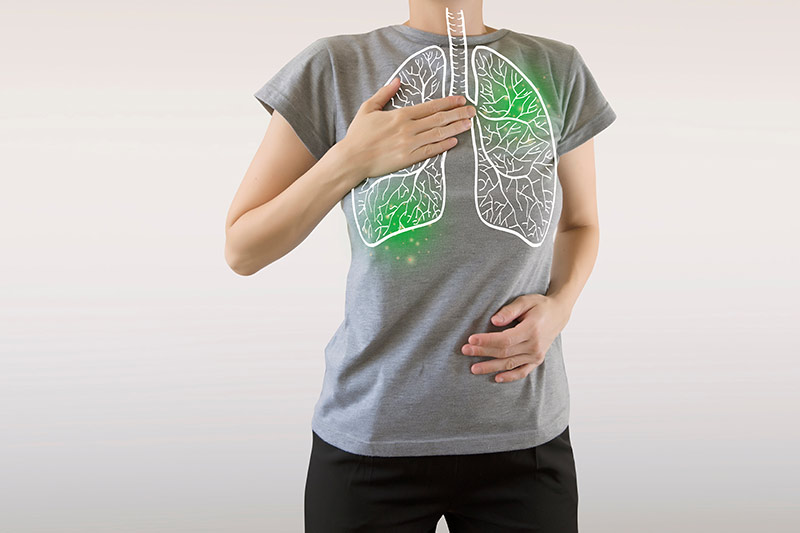Can you really quit smoking without willpower?
Every time I tell our members or seminar attendees “you don’t need any willpower to quit smoking and the CBQ method requires no willpower”, you’re asking me “How is it possible?” “How can I ever stop smoking without willpower?”
If you think it’s impossible to quit without willpower, then read on.
Because the truth is that you don’t need and, in fact, you shouldn’t use willpower if you want to find quitting easy.
What Is Willpower
Willpower is two things.
1) Willpower is a State of Resistance
Willpower by definition is…
Willpower is the control exerted to do something or resist an impulse
Quitting smoking with willpower means that there is the urge to smoke and you go against this urge, you go against the desire to smoke.
Quitting smoking with willpower DOES NOT mean being decisive, strong, determined, and making decisions like throwing your pack of cigarettes away. This decision-making process is an essential part of any change and it doesn’t mean you’re quitting smoking with willpower.
The problem with quitting with willpower is that you’re going against your desire. You think of smoking as something that’s going to benefit you somehow but you don’t allow yourself to have it.
And of course, this takes a lot of effort, it creates tension, it’s hard, and it makes you feel deprived. So you end up smoking more.

For example, if you experience a lot of stress and at that moment you try to resist a cigarette with willpower… what’s going to happen?
Well, it’s going to be very hard, you’re going to feel more stress and want to smoke even more. And even if you successfully resist the cigarette at that moment… you may end up smoking two or three consecutive cigarettes later because you felt deprived before. This is the hard way to go about your quit!
And I want you to know that even if you had superhuman amounts of willpower from birth or even if you practiced increasing your willpower you would still feel deprived because willpower by definition means going against your desire, and that’s hard.
2) Willpower Is Limited
Willpower is not a manifestation or a sign of your inner strength.
We tend to think that if someone is a strong person that means that they have more willpower but that’s not always the case, that’s not what willpower is.
Willpower is like a muscle that gets tired during the day. The more you use it the weaker it becomes.
For example, if you have a chocolate cake in front of you and you see it in the morning when you’re rested it’s going to be easy to say “no”.

But is it going to be as easy after a hard day at work when you’re tired and hungry? Of course not.
And it’s not because you changed as a person; you didn’t grow weaker as the day went by. You just got tired, your circumstances changed and your willpower got fatigued.
And it’s the same thing with resisting cigarettes. You can’t always go against your desire with willpower because willpower is not dependable; it’s limited.
Willpower doesn’t work because willpower doesn’t last.
Everyone can resist a few cigarettes with willpower but for how long?
At some point you’re going to find yourself in a stressful situation and, you know, when we feel stressed our willpower gets depleted. And when your willpower gets depleted you’re going to fall back to old patterns and risk relapsing.
Also, willpower doesn’t work because you cannot use something you have a limited supply of like your willpower to resist something you have an unlimited supply of like your emotions and your impulses and your urges. It’s hard, it’s not a fair fight.
And that’s why willpower can only cause temporary change. I’m going to tell you how to create lasting change in a bit.
When You Need Willpower
Willpower is not all bad it’s actually amazing and helps us do the right thing.
When it comes to making a change willpower can help you start something it can help you take the very first step. In our case, it can help you start researching, watching a video, or start a program. However, willpower is harmful when you use it as the means to achieve a goal exactly because it’s a state of resistance and it’s limited.

For example, if you are on a diet it may need some willpower to throw all the junk food from the house or to go on the scale and see where you’re starting from. But you shouldn’t use willpower to stay on a diet because you will feel deprived and crave all the things you’re not supposed to be eating.
If you want to go to the gym you may need willpower to get up from the couch or get dressed but you shouldn’t use willpower to stay and workout because you won’t perform well, you’re going to waste your time and have a bad experience.
When it comes to quitting smoking, you may need willpower to start researching, watch a video or make small decisions but you shouldn’t use your willpower to resist cigarettes forever in the hope that the desire for smoking will magically disappear by itself. Because if you do, you’re going to feel deprived and end up smoking more.
So do you see now why you can’t go through life always resisting cigarettes with willpower?
This is not a way to live, you’re not going to be happy.
So what are you supposed to do?
How to Quit Smoking Without Willpower
Like we said a few moments ago, willpower means going against your desire and impulse to smoke and that’s the hard way.
But what if you change the impulse, what if you remove the desire to begin with?
Then quitting becomes easy!

What you need to quit smoking is mindpower, which is greater than willpower.
You can learn what’s the difference between willpower and mindpower in this video:
Learning how to use your mindpower will also help you overcome the mental addiction to smoking. The mental addiction is the desire or need for cigarettes. It’s how smoking makes you feel and how much you believe you need it.
At the moment, you believe that smoking offers you something. Maybe you believe that it helps you cope with stress and boredom, socialize, concentrate, take a break or control your weight. And even though smoking offers you nothing at all… as long as you believe it does, you will desire it.
And the thing is that willpower does not remove the benefits you think you get from smoking and it doesn’t magically remove your desire to smoke. Because it’s hard to control our desires with willpower, our emotions don’t work that way.
And that’s why the solution is to change the emotions and stop desiring cigarettes. And you do that when you realize that smoking offers you nothing.
Think about it. Do you need any willpower to resist eating rat poison or ammonia or acetone?

Of course not! Because it’s disgusting and harmful.
Well, tobacco has inside arsenic that’s used in rat poison and ammonia and acetone and 4,000 chemicals, and the only reason why you want it is because you believe it offers you something. That’s the mental addiction in action.
My point is when you see smoking for what it really is you don’t desire it anymore and when there is no desire there is no need for willpower and quitting becomes easy.
How do you remove the desire for smoking?
When I was trying to quit smoking I struggled a lot with this and that’s why I started developing the CBQ method, and the 4 stages of the CBQ method help you remove this desire.
Learn exactly how the CBQ method removes the desire for cigarettes and why the CBQ method requires no willpower.
Is It Hard to Overcome the Desire for Cigarettes?
It’s easy to overcome this desire because it’s not a real desire.
It all started because nicotine hijacked your brain and made it believe that you need it to survive just like you need food and air and water.
When you’re hungry your brain is going to insist that you eat. The brain will communicate to you via your thoughts and tell you that you’re hungry. And it will insist because it needs you to survive.
In the same way, the brain insists for you to smoke because it thinks that you need nicotine to survive. So if you feel compelled to smoke even though you know better it’s not because you really enjoy smoking or because you’re self-destructive. It’s because your brain has outdated information. And when you use your willpower to resist a cigarette it’s like telling your mind that indeed “I want that I need that but I can’t have it” so your brain goes bananas.
But when you treat these craving thoughts as a memory, as an addiction, as a thought …they go.
How to Rewire Your Brain
When you put yourself in situations where you used to smoke and you don’t… and you are relaxed in these situations… you’re actually allowing your brain to get new information. This rewires your brain.
Because you show yourself that nothing happened because you didn’t smoke. You show your brain that you don’t need nicotine to survive so your brain adjusts and the craving thoughts eventually disappear.

How to Quit Smoking Permanently
So the solution is to remove the desire, the impulse, and change how you see smoking and your associations with it – that’s how you create lasting change.
Let’s think about the examples we talked about before.
When you go on a diet you may need willpower to start… but to create lasting change you must associate eating healthy and looking after your body with happiness, health, and joy. You must create those associations and when you do that, bad foods start becoming undesirable.
If you want to go to the gym and work out you may need willpower to start…but to create lasting change, to create a habit, you need to associate working out with health, happiness, confidence, and feeling good. With time, you won’t even need willpower to start because you’re going to be chasing this good feeling.
And of course to stop smoking you may need willpower to get started, educate yourself, research, or watch some videos… but to create lasting change and quit permanently you need to associate being smoke-free with feeling confident, healthy, wealthy, accomplished, and free.
Because if you desire the result, you won’t need any willpower to get motivated. And when you get some distance from your smoking habit you’ll be able to see that it did nothing for you. It was an abusive relationship based on lies and fear and you’re glad you’re out.
Conclusion
Willpower is a state of resistance and it’s limited. It’s good for starting things but bad for creating lasting change because you feel deprived, it makes the process difficult, and you may end up relapsing.
Willpower means going against the desire to smoke and this is hard. But when you overcome the desire to smoke, quitting becomes easy. And when there is no desire there is also no need for willpower.
To remove the desire for smoking you must change how you see smoking and quitting and that’s how you create lasting change and quit permanently.
So I hope this helped you rethink the role of willpower in your quit and that it gave you a new perspective.
If you want to overcome the mental addiction and change how you see smoking make sure you get the foundational video of the CBQ Method.
The CBQ Method is a 4-stage method that’s specifically designed to help you overcome the mental addiction, change how you think about smoking and break the habit. The mental addiction is the biggest part of the smoking addiction so overcoming it makes quitting easy.
Click here to get the Foundational Video if the CBQ Method
And if you want help and support, you can join our CBQ method Facebook support group. We have thousands of amazing members who are on the same journey as you. And we post tips every day to help you quit smoking and remain smoke-free.
Join the support group here: https://www.facebook.com/groups/cbqmethod/










